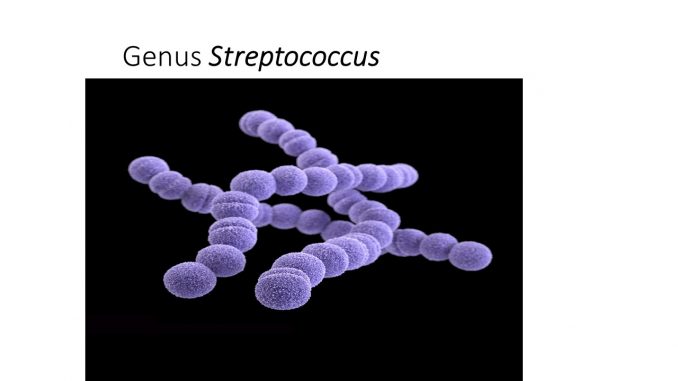
Genus Streptococcus: habitat, morphology, culture and biochemical characteristics
- The genus streptococcus include a large number of species of Gram +ve, catalase –ve cocci arranged in chain of varying length and also in pairs.
- Streptococcus form chains during growth due to successive cell division occurring in one plane only and daughter cells failing to separate completely.
Habitat:
- Some species are part of normal flora of Human and animals. Streptococcus salivarius
- some are important human pathogens eg. Streptococcus pyogens, S. pneumoniae, S agalactiae.
Morphology:
- The individual cocci are spherical or ovoid, 0.5-1 µm in diameter and are arranged in chains.
- The length of chain vary widely with cultural conditions. Larger chain are formed in liquid or broth than in solid agar.
- Streptococci are gram positive but they may become gram negative in ageing when bacteria die.
- Streptococci are non-motile and non-spore forming.
- Most species possess capsule. Group A and group C streptococci possess hyaluronic acid capsule while group B and D possess polysaccharide capsule.
Cultural and biochemical characteristics:
- Streptococci are aerobic or facultative anaerobes.
- They grow best at temperature 37°
- Streptococci grow well in media containing blood and sugar. 10 % CO2 promotes growth and haemolysis.
- Selective media containing aminoglycosides or 1: 500,000 crystal violet selectively permit growth of Streptococci by inhibiting other bacteria.
- On blood Agar: colonies are small, circular, semi-transparent, convex with small clear zone of hemolysis. Growth and hemolysis increases y 10% CO2. Streptococci are classified on the basis of hemolysis, α-hemolysis, β-hemolysis and no-hemolysis group.
- Streptococci are non-halophilic but can tolerate up to 6.5% NaCl (halotolerant)
- Tolerates 0.1% methylene blue and bile esculin agar.
- Streptococci ferment most sugars such as sorbitol. Trehalose, lactose maltose,mannitol etc with production of acid but no gas.
- Catalase (–) negative
